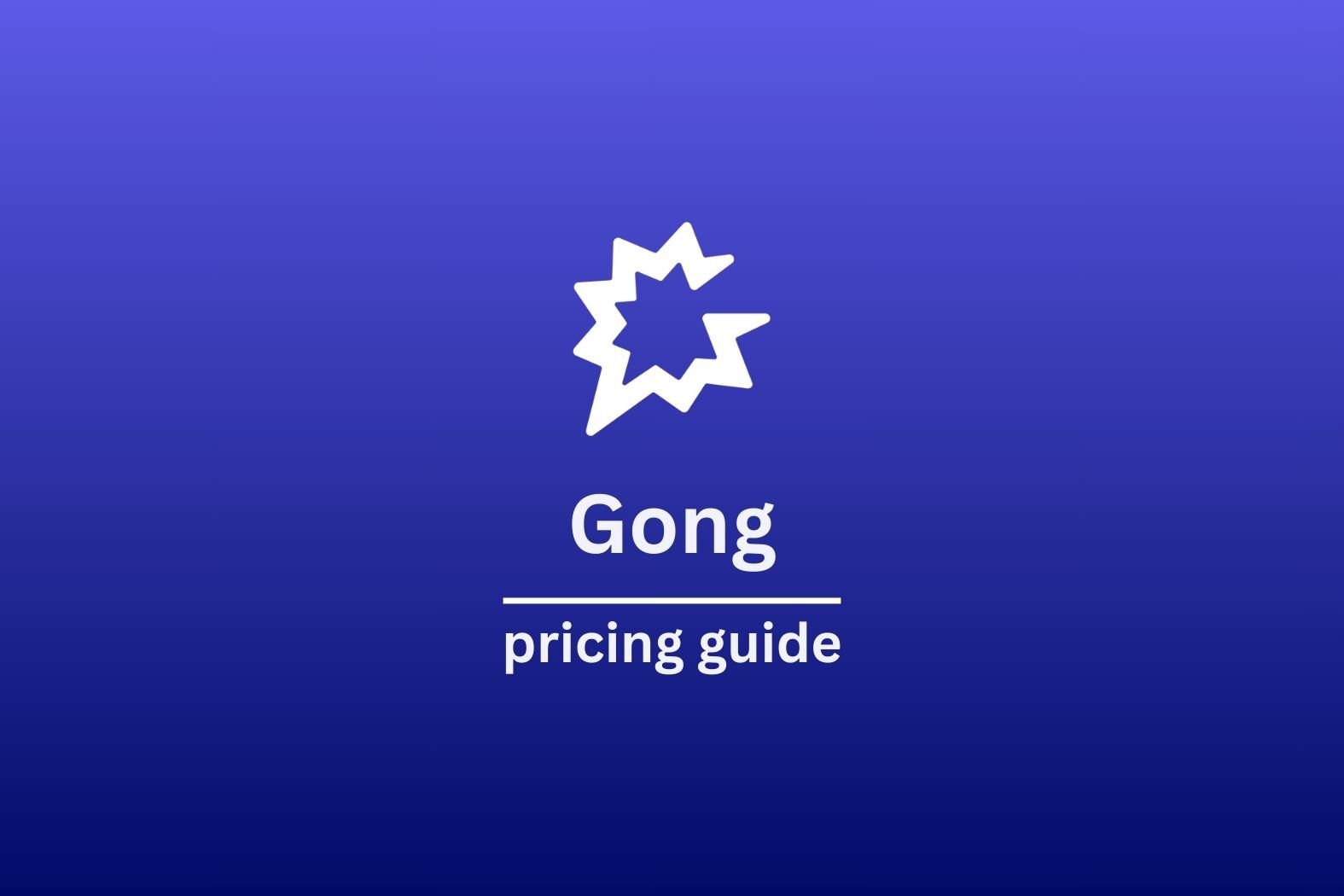There are many different styles, methodologies, and sales processes used by sales teams; however, one that isn’t as widely known but can be incredibly effective is selling through curiosity.
By focusing on understanding the customer’s needs and concerns, sales professionals can build stronger relationships, foster trust, and drive better sales outcomes.
Curiosity can revolutionize the way sales are conducted by shifting the focus from simply closing deals to truly engaging with customers. The facts on curiosity, even those unrelated to this sales methodology, are clear.
The curiosity-based approach encourages salespeople to ask insightful questions, listen actively, and provide tailored solutions that address the unique challenges faced by each client. As a result, sales teams can achieve deeper customer engagement, higher satisfaction rates, and improved sales performance.
The purpose of this blog is to delve into the principles of the curiosity-driven sales method and provide actionable insights on how to implement it effectively. By integrating curiosity-driven techniques into your sales process, you can enhance your sales outcomes and build more meaningful connections with your customers.
What is Curiosity-Driven Selling?
Curiosity-driven selling is a sales methodology that focuses on creating genuine curiosity to drive sales success. Unlike traditional sales techniques, which often emphasize persuasion and closing tactics, this method prioritizes understanding the customer’s needs, challenges, and desires through active inquiry and engagement. The core idea is that by being genuinely curious about the customer’s situation, sales professionals can build stronger relationships, uncover deeper insights, and provide more tailored solutions.
5 Core Principles of Curiosity-Driven Selling
- Active Listening: At the heart of this method is the practice of active listening. Sales professionals are trained to truly hear what the customer is saying, ask follow-up questions, and demonstrate a genuine interest in the customer’s perspective. This not only helps in gathering valuable information but also shows the customer that their opinions and needs are valued.
- Asking Insightful Questions: Instead of delivering a rehearsed sales pitch, the curiosity-driven sales method encourages salespeople to ask open-ended questions that prompt customers to share more about their challenges and goals. These questions are designed to elicit detailed responses that provide a deeper understanding of the customer’s situation.
- Building Trust and Rapport: By engaging in meaningful conversations and showing genuine curiosity, sales professionals can build trust and rapport with customers. This creates a foundation for a more collaborative and less adversarial relationship, making customers more open to discussing their true needs and considering the proposed solutions.
- Tailored Solutions: Armed with a comprehensive understanding of the customer’s needs, sales professionals can offer solutions that are specifically tailored to address those needs. This increases the likelihood of customer satisfaction and loyalty, as the solutions are directly relevant to their unique circumstances.
- Ongoing Training, Support, and Best Practice: The method also emphasizes the importance of ongoing training and support. Sales professionals are encouraged to constantly refine their questioning techniques, stay curious about industry trends, and adapt their approaches based on feedback and new insights.

There are many ways to improve sales team performance, but active listening has to be the best one. It’s the ultimate transferrable skill too.
The Difference from Traditional Sales Techniques
Traditional sales techniques often focus on delivering a persuasive pitch and closing the deal as quickly as possible. As a result, these methods can sometimes come across as pushy or self-serving, potentially alienating customers.
In contrast, the curiosity-driven method differentiates itself by prioritizing the customer’s needs and fostering a collaborative approach. This method reduces the pressure on both the salesperson and the customer, leading to more authentic interactions and sustainable relationships. This is a great way of having a solid sales methodology in practice while also making sure that you are being customer-centric in your sales approach. By adopting the curiosity-driven method, sales teams can shift from a transactional mindset to a relationship-driven approach, ultimately achieving better outcomes for both the customer and the business.
The Benefits of Curiosity-Driven Selling
Incorporating curiosity into the sales process offers numerous advantages that can significantly enhance both customer relationships and sales outcomes. Here are some key benefits of using curiosity-driven selling:
Deeper Customer Engagement: By asking thoughtful, open-ended questions and actively listening to their responses, sales professionals can create a more interactive and engaging dialogue. This approach makes customers feel heard and valued, fostering a sense of trust and loyalty. As a result, customers are more likely to share detailed information about their needs, preferences, and pain points, which can lead to more personalized and effective solutions.
Better Understanding of Customer Needs: Curiosity-driven selling allows sales professionals to gain a comprehensive understanding of their customers’ needs. By delving into the specifics of the customer’s situation, salespeople can uncover insights that might otherwise be overlooked. This deeper understanding enables them to tailor their offerings more precisely to meet the customer’s unique requirements, increasing the likelihood of a successful sale and higher customer satisfaction.
Fostering Adaptability and Innovation: Curiosity inherently promotes a mindset of continuous learning and adaptability. Sales professionals who embrace curiosity are more likely to stay informed about industry trends, market changes, and new technologies. This adaptability is crucial in a constantly evolving sales landscape, as it allows salespeople to adjust their strategies and approaches based on the latest information and feedback.
Building Long-Term Relationships: Curiosity-driven selling fosters stronger, more authentic relationships with customers. Instead of viewing each interaction as a one-time transaction, sales professionals approach each engagement as an opportunity to build a lasting partnership. This long-term relationship focus not only leads to repeat business but also generates positive word-of-mouth referrals, further enhancing the company’s reputation and reach.
Curiosity-driven selling offers a range of benefits that extend beyond immediate sales metrics. By engaging customers more deeply, understanding their needs more thoroughly, and fostering adaptability and innovation, sales teams can build stronger relationships and achieve sustained success in a competitive market.
Implementing Curiosity into Sales Training
Integrating curiosity-driven techniques into existing sales training programs can transform your sales team’s approach, leading to more meaningful customer interactions and improved sales outcomes. Here is a step-by-step guide to help you seamlessly incorporate these techniques into your training regimen:
Step 1: Introduce the Concept
Start by educating your sales team about the importance and benefits of curiosity-driven selling. Explain the principles behind the curiosity-driven method and how it differs from traditional sales techniques. Use real-world examples and case studies to illustrate the impact of curiosity on sales success. For instance, being well-versed in cloud technologies can greatly enhance a salesperson’s ability to respond to clients’ queries effectively. For this, you can encourage your team to use resources like Amazon AWS Exam Dumps to deepen their tech knowledge. When they understand the concepts, they become more adept and responsive in sales conversations.
Step 2: Develop Curiosity Skills
Encourage your team to cultivate their curiosity by:
- Asking Open-Ended Questions: Train salespeople to ask questions that require more than a yes or no answer. For example, “Can you tell me more about the challenges you’re facing with your current solution?” This helps in gathering more information and understanding the customer’s perspective.
- Active Listening: Teach the importance of active listening. Salespeople should focus on truly hearing what the customer is saying, taking notes, and asking follow-up questions based on the customer’s responses.
Step 3: Practical Exercises
Incorporate practical exercises to reinforce these skills:
- Role-Playing Scenarios: Create role-playing exercises where one participant plays the customer, and the other plays the salesperson. The salesperson’s goal is to uncover as much information as possible through curiosity-driven questions. After each role-play, provide constructive feedback on their questioning and listening skills. Below you’ll see a video of role-playing using the curiosity method.
- Curiosity Drills: Conduct drills where salespeople must ask a series of open-ended questions about a hypothetical product or service. The objective is to practice formulating questions that dig deeper into the customer’s needs and preferences.
Step 4: Discussion Prompts
Facilitate group discussions to share insights and experiences:
- Prompt Discussions: Use prompts like, “Describe a time when asking the right question led to a breakthrough in a sales conversation,” or “What are some questions you find most effective in uncovering customer needs?”
- Peer Feedback: Encourage team members to provide feedback on each other’s techniques and suggest improvements. This collaborative approach helps in refining their curiosity-driven selling skills.
Step 5: Ongoing Training, Support, and Best Practices
Curiosity-driven selling is an ongoing learning process:
- Regular Training Sessions: Schedule regular training sessions to revisit and reinforce curiosity techniques. Introduce new scenarios and challenges to keep the training dynamic and engaging.
- Monitor Progress: Track the performance of your sales team to identify areas where curiosity-driven techniques are being effectively applied and areas that need further improvement.
Step 6: Real-World Application
Encourage salespeople to apply these techniques in their daily interactions:
- Customer Conversations: Have them practice their curiosity skills during actual customer meetings and calls. Encourage them to reflect on these interactions and share their experiences during team meetings.Feedback Loop: Establish a feedback loop where salespeople can discuss what worked well and what didn’t, fostering a culture of continuous learning and adaptation.
By following these steps and incorporating practical exercises, role-play scenarios, and discussion prompts, you can effectively integrate curiosity-driven techniques into your sales training program. This will not only enhance your team’s skills but also lead to more meaningful customer relationships and improved sales performance.
Tools and Resources to Facilitate Curiosity-Based Selling
Adopting curiosity-based selling can be significantly enhanced with the right tools and technologies. These resources help sales teams to better understand their customers, track interactions, and continuously improve their techniques. Here are some key tools that support curiosity-driven selling:
CRM Systems
Systems like Salesforce or Notion are invaluable for curiosity-based selling. They allow sales professionals to record detailed notes on customer interactions, track engagement history, and set reminders for follow-up questions. Features such as customizable fields and tags help in organizing information specific to each customer’s needs and preferences, ensuring no valuable insight is overlooked.
tl;dv
tl;dv is a video recording software that offers customizable templates specifically designed for curiosity-based selling. Sales teams can record customer meetings and review them later to identify key insights and refine their questioning techniques. The software allows tagging and annotating specific parts of the video, making it easier to revisit critical moments in conversations. Additionally, tl;dv has a smart search feature where you can ask the AI questions about the meeting, further enhancing understanding and recall. These recordings can also be used for training purposes, where team members can analyze and learn from real interactions.
Training Platforms
Platforms like MindTickle provide comprehensive sales training solutions that can be tailored to curiosity-based selling. These platforms offer modules on active listening, asking open-ended questions, and other essential skills. Interactive elements such as quizzes, role-playing scenarios, and peer feedback loops help in reinforcing learning and ensuring practical application.
Overcoming Challenges in Curiosity-Based Selling
Implementing curiosity-based selling can present several challenges. Here, we identify common obstacles and provide strategic solutions to address them.
Challenge: Resistance to Change
Sales teams accustomed to traditional methods may resist adopting curiosity-driven techniques. They might perceive this approach as too time-consuming or deviating from tried-and-true tactics.
Solution: Emphasize Benefits and Provide Training
To overcome resistance, highlight the benefits of curiosity-based selling, such as deeper customer engagement and increased sales success. Provide comprehensive training sessions that demonstrate the effectiveness of this approach through real-world examples and success stories. Encourage gradual adoption by integrating curiosity-driven techniques into existing practices rather than replacing them entirely.
Challenge: Mastering New Skills
Developing the skills required for curiosity-based selling, such as active listening and asking insightful questions, can be challenging for sales professionals who are used to a more transactional approach.
Solution: Ongoing Training, Support, and Best Practices
Implement a continuous learning framework that includes regular training, role-playing exercises, and feedback sessions. Use tools like training platforms and video recording software to simulate real scenarios and provide opportunities for salespeople to practice and refine their skills. Encourage peer-to-peer learning and mentorship programs to foster skill development in a supportive environment.
Challenge: Maintaining Consistency
Consistently applying curiosity-driven techniques across all sales interactions can be difficult, especially under pressure to meet targets and close deals quickly.
Solution: Integrate Curiosity into the Sales Process
Standardize curiosity-driven practices by integrating them into the sales process. Use CRM systems to track customer interactions and ensure follow-up questions are recorded and addressed. Establish performance metrics that reward curiosity-based behaviors, such as the quality of customer insights gathered or the depth of engagement achieved.
Challenge: Measuring Effectiveness
Quantifying the impact of curiosity-based selling can be challenging, as its benefits may be more qualitative, such as improved customer relationships and long-term loyalty.
Solution: Use Metrics and Feedback
Develop specific metrics to measure the effectiveness of curiosity-based selling, such as customer satisfaction scores, repeat business rates, and the depth of customer insights recorded. Collect feedback from customers to gauge their experience and perception of the sales process. Regularly review these metrics and feedback to refine and improve the approach.
By addressing these challenges with strategic solutions, sales teams can successfully implement curiosity-based selling, leading to more meaningful customer interactions and better sales outcomes.
Is Curiosity-Based Selling for Your Business?
Evaluating whether curiosity-based selling is suitable for your business involves assessing several key factors, for example if your business relies on deep, consultative sales interactions rather than quick, transactional deals, curiosity-based selling is likely to be highly effective. It works best in environments where understanding the customer’s needs is crucial for tailoring solutions.
Sales leaders must also assess a sales team’s willingness to adopt new approaches. Are they open to continuous learning and development? Teams that embrace change and prioritize customer relationships will benefit the most from this method.
Equally, if your business has a complex sales cycles that require multiple touchpoints and detailed customer understanding, curiosity-driven selling can provide significant advantages by ensuring each interaction adds value and builds a stronger relationship.
Another point of assessment is the overall potential impact of it. Are the inconveniences and challenges, like those listed above, worth the value it can bring to the business? If any of these are worth the undertaking then it may be a good solution.
Deeper Relationships – By building stronger relationships and uncovering deeper customer insights, curiosity-based selling can lead to more tailored solutions and higher conversion rates, ultimately driving revenue growth.
Customer Interaction – Customers appreciate when sales professionals show genuine interest in their needs. This approach can lead to higher customer satisfaction, loyalty, and repeat business, as customers feel valued and understood.
Team Performance – Curiosity-driven selling fosters a culture of continuous improvement and learning. Sales teams become more adaptable and innovative, improving overall performance and effectiveness.
Integration with Other Sales Methodologies
Curiosity-based selling can complement various established sales methodologies:
SPIN Selling: SPIN (Situation, Problem, Implication, Need-Payoff) already relies on questioning techniques. Incorporating curiosity-driven elements can enhance the effectiveness of SPIN by deepening the quality of the questions and engagement.
BANT: While BANT (Budget, Authority, Need, Timing) focuses on qualifying leads, adding curiosity-driven questions can provide a richer understanding of the prospect’s context and needs, leading to better qualification and engagement.
MEDDIC/MEDDPICC: These methodologies (Metrics, Economic Buyer, Decision Criteria, Decision Process, Identify Pain, Champion, and optionally Paper Process, Competition) benefit from curiosity as it helps uncover detailed insights during complex sales processes, ensuring all critical factors are addressed.
Curiosity-based selling is versatile and can be integrated with these and other methodologies to enhance their effectiveness. By evaluating your business needs and sales environment against these criteria, you can determine if this approach will drive better outcomes for your organization.
Embrace the Power of Curiosity in Sales
The curiosity-driven sales method offers a transformative approach to sales that prioritizes genuine interest in understanding customer needs. This method fosters deeper customer engagement, builds stronger relationships, and leads to more tailored solutions that can significantly enhance sales outcomes.
By shifting the focus from traditional sales pitches to a more inquisitive and customer-centric approach, sales professionals can unlock new levels of success and satisfaction for both themselves and their clients.
Curiosity-driven selling encourages continuous learning and adaptability, empowering sales teams to stay ahead in a constantly evolving market. It also complements other established sales methodologies like SPIN, BANT, and MEDDIC/MEDDPICC, making it a great addition to any sales strategy. The benefits of this approach are clear: improved revenue growth, higher customer satisfaction, and enhanced team performance.





